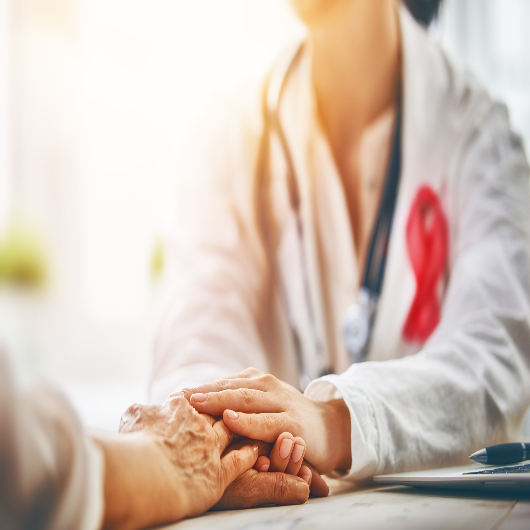Are Cancerous Breast Lumps Painful?

July 27, 2023
If a woman feels a painful lump in her breast, does that mean it’s cancer? The vast majority of the time, the answer is no. But there’s a caveat, says Deena Graham, M.D., a medical oncologist who specializes in treating women with breast and gynecologic cancers at John Theurer Cancer Center at Hackensack University Medical Center.
“Historically it’s been said that if a lump is painful, it’s probably not cancerous,” Dr. Graham says. “While painful lesions often aren’t cancerous, rarely they can be. Any lump should be brought to the attention of a health care provider, whether painful or not.”
What Does a Cancerous Tumor Feel Like?
Dr. Graham describes how a cancerous breast tumor may feel:
- Painless
- Hard mass with angular edges
- Similar to what the edge of a knuckle feels like
- A lump that remains fixed in place when you try to move it around with your fingers
Additional signs of suspicious breast lumps can include:
- Swelling around the breast, collarbone or armpit, which can occur even before you feel a lump
- Redness, thickening or dimpling of the skin, which can resemble an orange peel
- A newly retracted, or newly inverted facing nipple (where the nipple points inward towards the breast, instead of outward)
- Discharge from the nipple, especially if it’s bloody
When to Get Screened for Breast Cancer
Nearly 300,000 new cases of invasive breast cancer will be diagnosed in the United States in 2023, according to the American Cancer Society. Since most cases are detected by mammograms—a low-dose X-ray that detects changes in breast tissue—it’s wise to undergo screening when you’re eligible.
Annual mammogram screenings should begin at age 45 for every woman, but women who are 40 to 44 may opt to begin yearly screenings sooner. Learn when to get screened for breast cancer.
What to Do If You Find a Breast Lump
Most breast lumps are benign, meaning they’re not cancerous, Dr. Graham says. Other types of lumps can include cysts or tough, fibrous masses called fibroadenomas.
“In younger patients, most of these lumps are benign,” she says. “But if a woman is post-menopausal and develops a mass—painful or not—that would be more likely to be cancerous than for someone in her 20s or 30s.”
Regardless of age, women should see a doctor to investigate any breast lump, Dr. Graham says. Some information to prepare in advance can include:
- Additional context about the lump’s size and location
- Whether the lump is growing, and if so, how fast
- Any skin or nipple changes
- If you’ve suffered recent trauma to the breast, such as an accident or jolt
- Birth control use or fertility treatment
- Details about the lump’s appearance in relation to the timing of your last menstrual period or recent pregnancy
“Don’t wait to see your primary care doctor or gynecologist, go to whichever you feel most comfortable with,” Dr. Graham says. “The most important thing is to bring it to someone’s attention. There’s no mass on the breast that should be ignored.”
Next Steps & Resources:
- Meet our source: Deena Graham, M.D.
- Make an appointment to get screened for breast cancer.
The material provided through HealthU is intended to be used as general information only and should not replace the advice of your physician. Always consult your physician for individual care.






